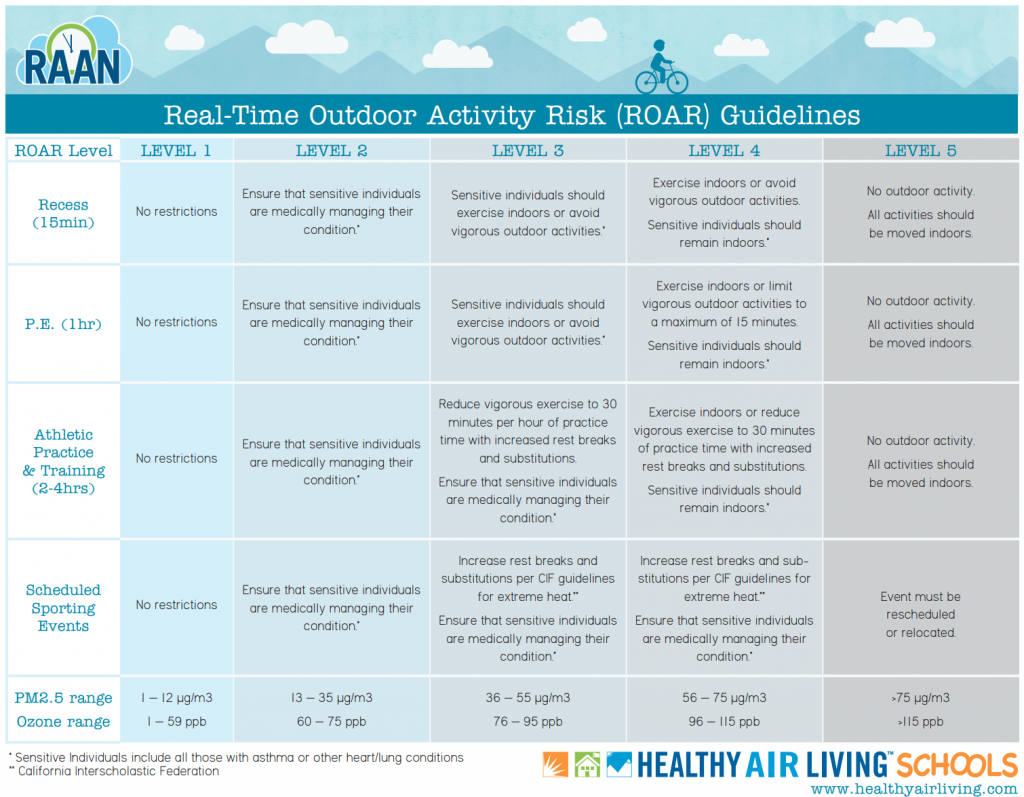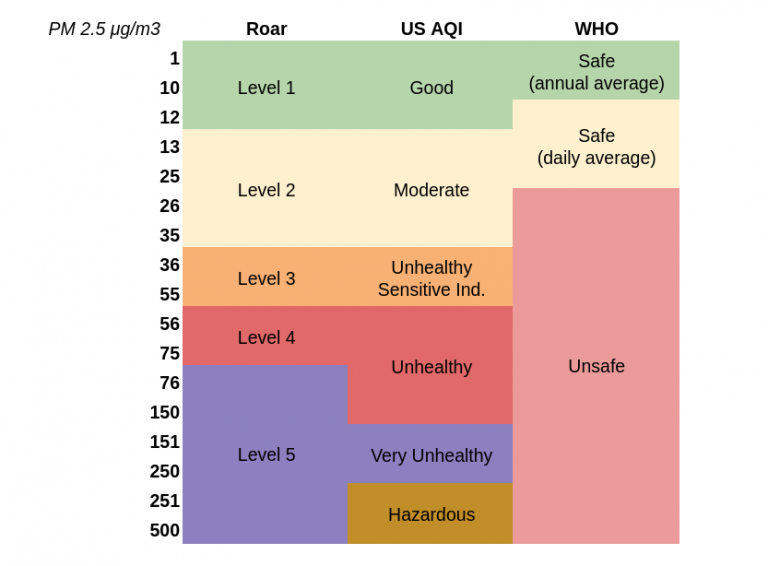Open and Accurate Air Quality Monitors
We design professional, accurate and long-lasting air quality monitors that are open-source and open-hardware so that you have full control on how you want to use the monitor.
Learn MoreMost international schools base their AQI policies on the US AQI standard that defines six bands of air quality from “Good” to “Hazardous”. Although the standard gives a good general guideline, schools often struggle in the actual implementation of the guideline as it gives little guidance on the actual exposure that students should have -in particular when doing outdoor exercise.
In 2010 California’s San Joaquin Valley school system, based in Fresno county which is in one of the worst air pollution affected areas in the US came out with the real-time outdoor activity risk guideline (ROAR).
The guideline was developed in co-operation with the UCSF-Fresno, and the American Lung Association in Central California. As it is based on specific, concentration-based health recommendations, the guideline now makes it possible for schools, and others to make informed decisions about when outdoor activities should be limited, and for whom.
As far as we are aware, it is the only guideline that explicitly defines the amount of outdoor exercise recommended for specific air pollution levels.

https://www.valleyair.org/Programs/RAAN/documents/RAAN-AQ-activity-guidance-chart.pdf
The guideline for example limits vigorous exercise to 30 minutes per hour for athletic practice if the PM2.5 exceeds 35μg/m3.
The first three bands of the roar guideline correspond with the US AQI standard and thus it is relatively easy for schools to supplement their existing (US AQI) based air quality policies with the specific ROAR recommendations.
On levels four and five, the ROAR guideline -based on its extensive research into the health impacts, sets much stricter cut-off points.
ROAR level four at which sensitive individuals should avoid outdoor exercise begins at 56 μg/m3 rather than the US AQI’s 66 μg/m3.
ROAR level five, at which everyone should avoid outdoor exercise, begins at 76 μg/m3 rather than the US AQI’s 140 μg/m3.

In AirGradient we allow the use of both, the US AQI color bands as well as the ROAR guideline colors. If you use the μg/m³ measurement, we will display the ROAR colors inside the dashboard. However, we use the WHO safe limit of 10μg/m³ as a cutoff for level 1.
Curious about upcoming webinars, company updates, and the latest air quality trends? Sign up for our weekly newsletter and get the inside scoop delivered straight to your inbox.
Join our Newsletter
We design professional, accurate and long-lasting air quality monitors that are open-source and open-hardware so that you have full control on how you want to use the monitor.
Learn More